Snails are fascinating creatures that belong to a large group called Gastropoda, which includes over 60,000 different species. You can find them in many places, from your backyard garden to oceans and lakes. In this article, we will explore their physical characteristics, habitats, diets, reproduction, predators, and even how they are used as food in various cultures.
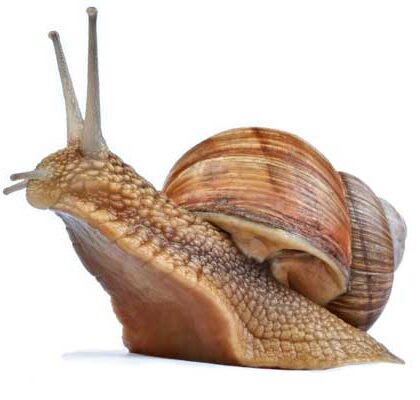
Snails come in various types, each with unique characteristics. Below is a comprehensive table showcasing some notable snail species, including their sizes, whether they are toxic, and their edibility.
| Common Name | Scientific Name | Size (Length) | Toxicity | Edibility |
|---|---|---|---|---|
| Giant African Snail | Achatina fulica | Up to 30 cm | Non-toxic | Yes (cooked) |
| Apple Snail | Pomacea canaliculata | Up to 15 cm | Non-toxic | Yes (cooked) |
| Roman Snail | Helix pomatia | Up to 10 cm | Non-toxic | Yes (cooked) |
| Common Garden Snail | Cornu aspersum | Up to 5 cm | Non-toxic | Yes (cooked) |
| Eastern Black Knot Snail | Succinea spp. | Up to 3.5 cm | Non-toxic | Yes (not common) |
| Brown Garden Snail | Cornu aspersum | Up to 3.5 cm | Non-toxic | Yes (cooked) |
| Blue-Striped Snail | Elysia chlorotica | Up to 5 cm | Non-toxic | Yes (not common) |
| Cone Snail | Conus spp. | Up to 15 cm | Highly toxic | No |
Giant African Snail (Achatina fulica): This is one of the largest land snails, often found in tropical areas. It is non-toxic and considered edible when properly prepared, making it a delicacy in some cultures.
Apple Snail (Pomacea canaliculata): Known for its round shell, this species is popular in aquariums and is also edible. It is non-toxic but can accumulate toxins from its environment, so caution is advised.
Roman Snail (Helix pomatia): A traditional food in Europe, this medium-sized snail is non-toxic and often used in culinary dishes, particularly in French cuisine (escargot).
Common Garden Snail (Cornu aspersum): Frequently found in gardens, this snail is non-toxic and widely consumed after cooking. It's a staple in many Mediterranean diets.
Eastern Black Knot Snail (Succinea spp.): A smaller species, this snail is also non-toxic and occasionally eaten, although not as commonly as other species.
Brown Garden Snail (Cornu aspersum): Similar to the common garden snail, it is non-toxic and edible, often prepared in various dishes.
Blue-Striped Snail (Elysia chlorotica): A beautiful sea slug rather than a true snail, it is non-toxic and occasionally eaten, though it's not a common food source.
Cone Snail (Conus spp.): This marine snail is known for its beautiful shell but is highly toxic due to venom. It is not considered edible
Understanding the different types of snails helps us appreciate their diversity and significance in various ecosystems. While many snails are safe and even delicious to eat, some, like the cone snail, are dangerous due to their toxicity. When consuming snails, it's crucial to ensure they are sourced properly and prepared safely to avoid any health risks.

One of the most recognizable features of snails is their spiral shell. The shell provides protection from predators and harsh weather. It also helps keep them moist, which is crucial since snails can dry out quickly.
Snails have soft bodies that can be divided into two main parts:
Visceral Mass: This contains most of their internal organs.
Foot: A muscular part used for movement. Snails move slowly by gliding on a trail of mucus, which helps them slide over surfaces.
Snails can live in many environments:
Terrestrial Snails: These are commonly found in gardens, forests, and grasslands. They thrive in moist areas rich in organic matter.
Aquatic Snails: You can find them in freshwater bodies like lakes and ponds, as well as in the ocean, where they play important roles in aquatic ecosystems.
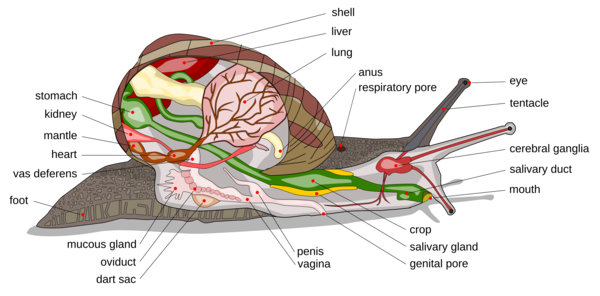
Most snails are herbivores, meaning they primarily eat plant material. Their diet includes:
Leaves and Stems: They enjoy munching on tender leaves and stems of various plants.
Algae: Aquatic snails often feed on algae that grow on rocks and water surfaces.
Fungi: Some snails also eat mushrooms and other types of fungi.
Snails use a special tongue-like structure called a radula, which is covered in tiny teeth, to scrape food off surfaces. This allows them to effectively consume their meals.
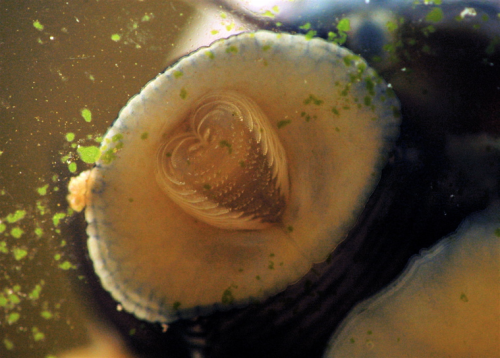
Snails might seem like simple creatures, but they actually have thousands of teeth! Unlike human teeth, which are hard and fixed in our jaws, a snail’s teeth are tiny, flexible structures on a specialized organ called the radula. This ribbon-like structure works somewhat like a conveyor belt covered with microscopic teeth. The radula moves back and forth, helping the snail scrape and grind food, typically plant material or algae, to consume.
The number of teeth varies by species, but on average, a garden snail can have between 10,000 to 15,000 teeth. In some cases, certain snail species may even possess over 20,000 teeth! These teeth are arranged in rows along the radula, with new rows continually forming to replace worn-out teeth at the back as they move forward over time. The radula allows snails to feed on various surfaces, from soft plant leaves to algae-coated rocks.
Despite their miniature size, these teeth are remarkably effective and strong for scraping. The continual renewal process of the radula keeps the snail equipped with fresh, sharp teeth, which are essential for survival and feeding in various environments.
Snails have unique ways of reproducing:
Hermaphroditism: Most land snails have both male and female reproductive organs, allowing them to mate with any other snail they encounter.
Egg Laying: After mating, they lay clusters of eggs in moist soil or under leaves. Depending on the species, they can lay dozens to hundreds of eggs at a time.
The eggs hatch into baby snails that look like miniature versions of adults. They grow through several stages before reaching maturity.
Snails display interesting behaviors:
Movement: Snails are slow movers, using their muscular foot to glide along surfaces.
Hibernation and Estivation: During extreme weather, snails can enter a dormant state to conserve moisture and energy.
Social Interaction: Some species exhibit social behaviors, including courtship rituals during mating.
Snails have a variety of natural predators, including:
Birds: Many bird species enjoy snails as a tasty snack.
Mammals: Animals like hedgehogs and some rodents will also eat snails.
Invertebrates: Certain insects and other invertebrates, such as beetles, may prey on snails.
Snails play vital roles in ecosystems:
Decomposition: By feeding on decaying plant matter, snails help break down organic material, enriching the soil.
Food Source: They are an important food source for many animals, helping to maintain the food web.
Soil Aeration: Their movement and feeding habits help aerate the soil, promoting healthy plant growth.
In many cultures, snails are considered a delicacy. Here are a few examples:
France: Escargot, or cooked snails, are a popular dish often served with garlic butter and herbs. They are usually prepared by cleaning the snails, removing them from their shells, and then cooking them in a flavorful sauce before returning them to the shells for serving.
Italy: Snails (known as "lumache") are used in pasta dishes or stews, often with tomato sauce and herbs.
Spain: In some regions, snails are cooked in paella or stews, adding a unique flavor to the dish.
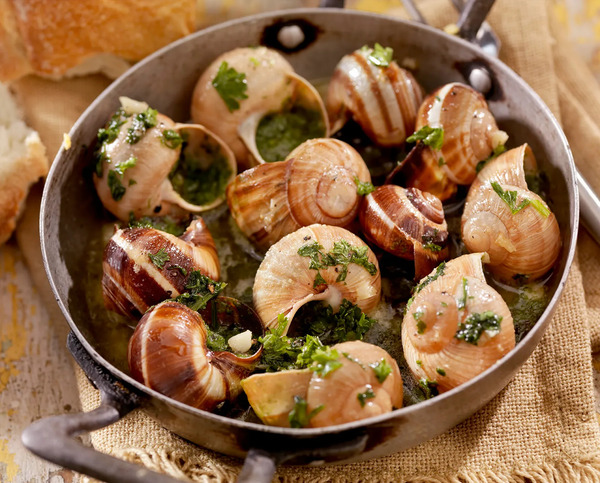
To prepare snails for cooking:
Cleaning: Snails should be purged for a few days before cooking to clear their digestive systems. Rinse them thoroughly.
Boiling: Boil the snails for about 5-10 minutes to kill them and make them easier to handle.
Cooking: Prepare them with garlic, butter, and herbs, or incorporate them into various dishes like pasta or soups.
Lifespan: Depending on the species, snails can live anywhere from a few years to over a decade.
Speed: The average land snail moves at a speed of about 0.03 miles per hour, making them one of the slowest animals.
Color and Patterns: Snail shells come in various colors and patterns, which help them blend into their surroundings for camouflage.
Snails are remarkable creatures that contribute to their ecosystems in many ways. Their unique adaptations, diverse diets, and interesting behaviors make them an important part of our natural world. Whether as part of the food chain or as a delicacy on our plates, snails are worth appreciating for their roles in nature and culture. Understanding snails can help promote conservation efforts and enhance our appreciation of biodiversity.
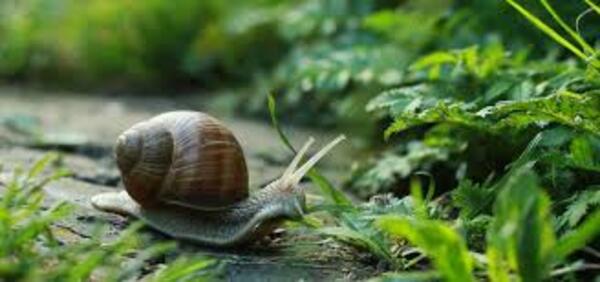
Snails are often a topic of curiosity when it comes to their health benefits and potential risks. Here’s a detailed look at whether snails are good or bad for you.
Nutritional Value:
High in Protein: Snails are an excellent source of protein, which is essential for muscle growth and repair.
Low in Fat: They are low in fat compared to many other protein sources, making them a good option for those looking to maintain a healthy weight.
Rich in Vitamins and Minerals: Snails contain important vitamins such as vitamin B12, which supports nerve health, and minerals like iron, magnesium, and zinc, which are vital for various bodily functions.
Health Benefits:
Antioxidant Properties: Some studies suggest that snails may have antioxidant properties, helping to combat oxidative stress in the body.
Skin Health: Snail mucin, derived from snails, is used in various skincare products due to its moisturizing and healing properties. It can help with skin regeneration and reduce signs of aging.
Low-Calorie Food: Snails are low in calories, making them a healthy addition to meals without contributing to weight gain.
Parasites and Toxins:
Risk of Infection: Raw or undercooked snails can carry parasites like the rat lungworm (Angiostrongylus cantonensis), which can lead to serious health issues. Proper cooking is essential to eliminate these risks.
Environmental Contaminants: Snails can accumulate toxins from their environment, especially if they are harvested from polluted areas. It’s important to source them from reputable suppliers.
Allergic Reactions: Some individuals may have allergies to shellfish, and since snails are mollusks, they can cause allergic reactions in sensitive people.
Digestive Issues: For some, eating snails can lead to digestive discomfort, especially if consumed in large quantities or if they are not prepared properly.
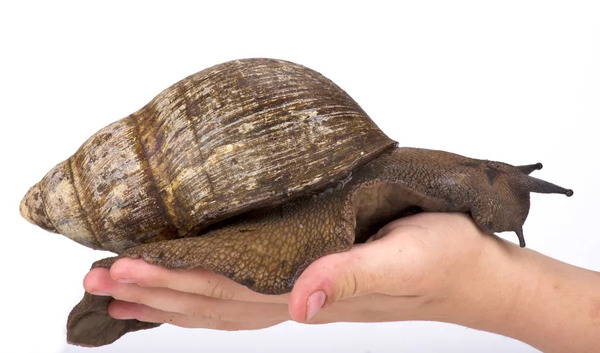
Culinary Delicacy: In many cultures, particularly in French cuisine, snails (escargot) are considered a delicacy. They are typically cooked with garlic butter and herbs, making them flavorful and enjoyable.
Safe Preparation: Always ensure snails are properly cleaned and cooked to kill any harmful bacteria or parasites. Cooking them thoroughly eliminates most risks associated with eating snails
Overall, snails can be a nutritious and low-calorie food option, offering various health benefits. However, it is crucial to prepare them safely and be aware of potential risks. If you enjoy trying new foods and are mindful of sourcing and cooking methods, snails can be a tasty addition to your diet. Always consult with a healthcare provider if you have concerns about allergies or dietary restrictions related to consuming snails.
Snails belong to the class Gastropoda, which is a diverse group of mollusks. Their close relatives include a variety of other gastropods and mollusks, as well as some animals from different classes. Below are some of the main groups and examples of organisms closely related to snails.
Description: Slugs are similar to snails but lack a prominent shell. They have a soft body and are often found in similar habitats as snails.

Examples:
Common Garden Slug (Arion hortensis): Often found in gardens, this slug can vary in color and is known for its slimy texture.
Black Slug (Arion ater): A larger species that can be a pest in gardens, it is typically black or dark brown.
Description: These are aquatic snails that live in freshwater environments. They typically have coiled shells and are essential for aquatic ecosystems.
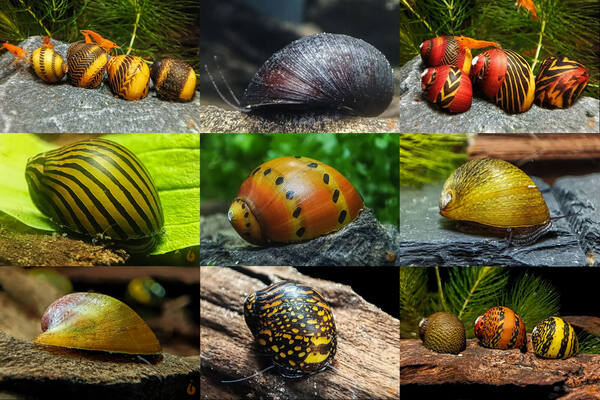
Examples:
Great Pond Snail (Lymnaea stagnalis): Known for its large size and coiled shell, it is found in ponds and lakes across Europe and North America.
Common Apple Snail (Pomacea canaliculata): Often kept in aquariums, it is notable for its bright colors and large size.
Description: These brightly colored marine gastropods are known for their striking appearances and often lack a shell. They are found in oceans around the world.
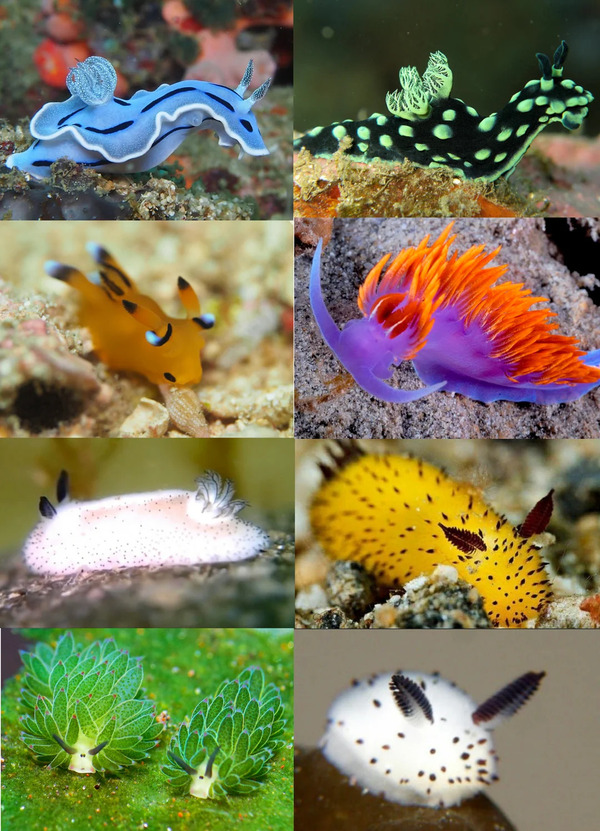
Examples:
Blue Dragon (Glaucus atlanticus): A small, brightly colored sea slug that floats on the surface of the ocean and feeds on jellyfish.
Spanish Dancer (Hexabranchus sanguineus): Known for its vibrant colors and unique swimming style, resembling a dancing motion.
Description: These are larger marine gastropods that have spiral shells and are often considered culinary delicacies.
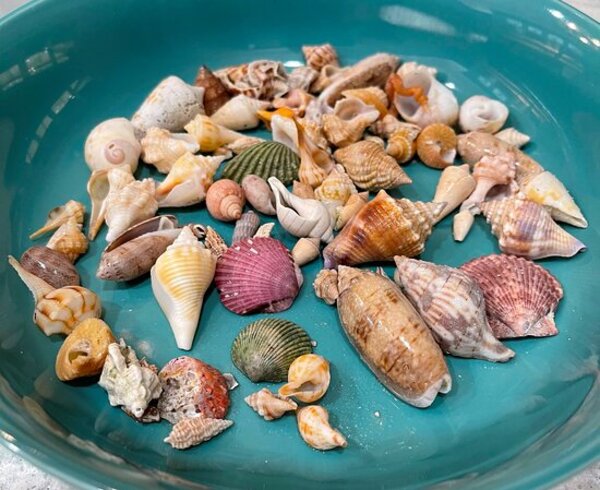
Examples:
Knobbed Whelk (Busycon carica): Found along the Atlantic coast of North America, it has a large, spiral shell and is often harvested for food.
Queen Conch (Strombus gigas): A popular seafood item in Caribbean cuisine, it has a large, spiral shell and is known for its delicious meat.
Description: Snails share their class with various other mollusks, which may not be gastropods but are still closely related.
Examples:
Clams: Bivalves like the Eastern Oyster (Crassostrea virginica) and Manila Clam (Venerupis philippinarum), which have two-part shells and live in aquatic environments.
Octopuses: Although they belong to a different class (Cephalopoda), octopuses share a common ancestor with snails and other mollusks.
Snails are part of a vast and diverse group of relatives within the gastropods and the larger mollusk family. Their close relatives, such as slugs, pond snails, sea slugs, and whelks, illustrate the wide range of adaptations and habitats that these creatures occupy. Understanding these relationships helps us appreciate the diversity of life within aquatic and terrestrial ecosystems.
animal tags: Snails
We created this article in conjunction with AI technology, then made sure it was fact-checked and edited by a Animals Top editor.